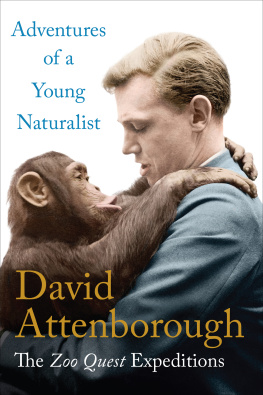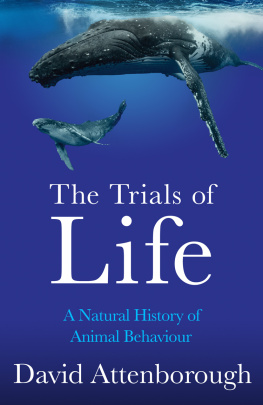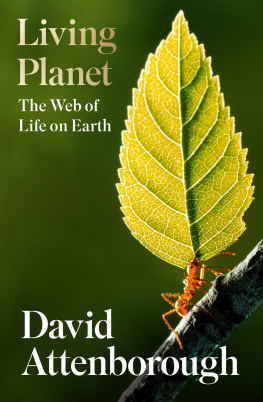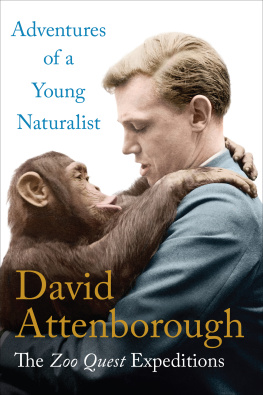Attenborough - David Attenboroughs First Life
Here you can read online Attenborough - David Attenboroughs First Life full text of the book (entire story) in english for free. Download pdf and epub, get meaning, cover and reviews about this ebook. publisher: HarperCollins Publishers, genre: Religion. Description of the work, (preface) as well as reviews are available. Best literature library LitArk.com created for fans of good reading and offers a wide selection of genres:
Romance novel
Science fiction
Adventure
Detective
Science
History
Home and family
Prose
Art
Politics
Computer
Non-fiction
Religion
Business
Children
Humor
Choose a favorite category and find really read worthwhile books. Enjoy immersion in the world of imagination, feel the emotions of the characters or learn something new for yourself, make an fascinating discovery.
- Book:David Attenboroughs First Life
- Author:
- Publisher:HarperCollins Publishers
- Genre:
- Rating:4 / 5
- Favourites:Add to favourites
- Your mark:
- 80
- 1
- 2
- 3
- 4
- 5
David Attenboroughs First Life: summary, description and annotation
We offer to read an annotation, description, summary or preface (depends on what the author of the book "David Attenboroughs First Life" wrote himself). If you haven't found the necessary information about the book — write in the comments, we will try to find it.
David Attenboroughs First Life — read online for free the complete book (whole text) full work
Below is the text of the book, divided by pages. System saving the place of the last page read, allows you to conveniently read the book "David Attenboroughs First Life" online for free, without having to search again every time where you left off. Put a bookmark, and you can go to the page where you finished reading at any time.
Font size:
Interval:
Bookmark:
Contents
CHARNWOOD FOREST IS not a dense stand of trees. It is a forest only in the medieval sense of the word, that is to say, a wild relatively undeveloped patch of land where the soil is not rich or deep enough to make it worthwhile ploughing in order to grow crops. To me, as a boy, growing up in the nearby city of Leicester, it was the less interesting side of the county. My obsession was collecting fossils. In the eastern half of Leicestershire there were honey-coloured iron-rich limestones which were full of fossils bullet-shaped belemnites, wrinkled bi-valved shells the size and approximate shape of hazelnuts and most beautiful of all shells coiled like rams horns, some no bigger than my fingernail, some if I was lucky six inches across. I collected all of these with great enthusiasm.
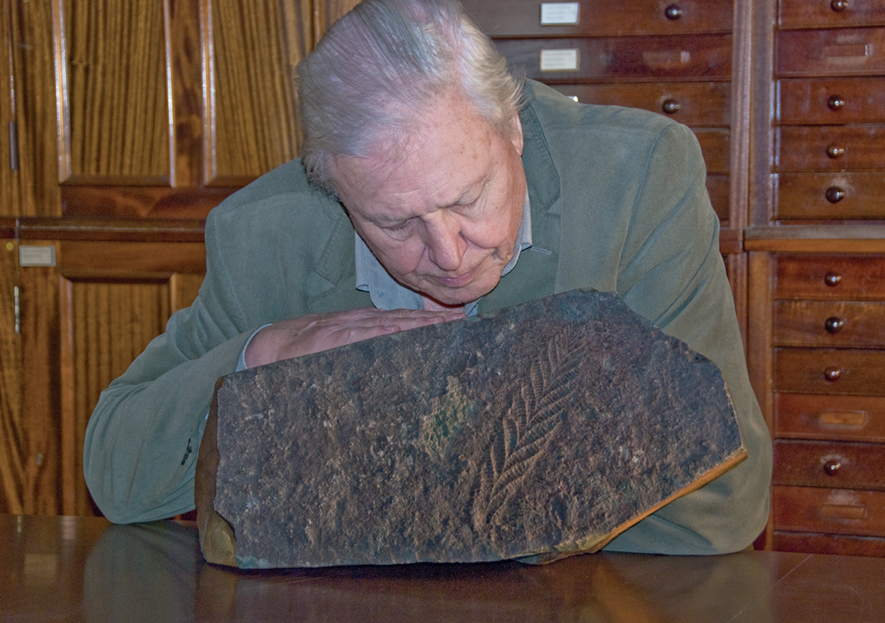
Charnia masoni: the original fossil found by Roger Mason showing early life in an era where there was long believed to be none.
The rocks of Charnwood, however, I scarcely looked at. They were so old that they contained no fossils of any kind. Indeed, it was their very lack of fossils that defined them. The oldest fossiliferous rocks known to the pioneer geologists of Victorian times who established the basic outlines of their science were found in Wales and were accordingly given the name Cambrian. Charnwoods rocks, however, were even older. They were therefore called Precambrian.
Such fossil-free deposits, underlying the fossiliferous Cambrian, were soon recognised in many other parts of the world. Some of these were sediments that had been so compressed and distorted that no visible signs of living organisms could have survived. Some were crystalline igneous rock, solidified magma that had welled up from deep in the Earths crust and could never have contained life of any kind. Charnwoods rocks, however, were of neither kind. They were layered, stratified and still relatively unchanged so that they might easily have contained fossils. But no one had ever found any. And I didnt even look.
Why the Precambrian lacked fossils was a great puzzle to geologists. In some parts of the world, there were Cambrian rocks lying immediately above them. The fossils they contained were varied and, for the most part strikingly different from any animals alive today. The simplest of them resembled fret-saw blades and were called graptolites. They acquired their name, which comes from a Greek word meaning writing, from a fancied resemblance of their little jagged lines to some kind of obscure primitive scribble. Their true nature was not established until the 1950s when delicate techniques of extracting their crushed remains from the surrounding matrix and examination of them through the microscope revealed that each tooth of the fret-saw blade was a socket that once held a tiny organism like a coral polyp.
But alongside these were very different creatures, trilobites. They looked like the woodlice or penny-sows that I knew from the garden. They had an armoured head and end section and in between a number of segments, each of which carried beneath it a pair of legs. They were, in short, quite complex creatures. To those Victorians who were trying to reconcile the discoveries made by geologists with the story of creation, as recorded in the Book of Genesis, it seemed that the first animals to appear on Earth were extraordinarily complicated.
Darwin and other scientists at the time did not accept, of course, that this could be so. Trilobites must have been preceded in the primeval seas by much simpler organisms. But even so, why had those hypothetical creatures left no trace? Perhaps there had been some world catastrophe that had eliminated all remains of previous animals from rocks everywhere. Perhaps the chemistry of the early oceans was such that its animal inhabitants were unable to extract the substances from it that were necessary for the secretion of shells. It was, in Darwins words, a great mystery.
And then, in April 1957, an eleven-year-old boy named Roger Mason from the same Leicester grammar school that I had attended less than twenty years earlier, found a fossil in the Charnwood rocks. He and two friends, Richard Allen and Richard Blatchford, were climbing up the rocky sides of a disused quarry, close to a golf course at a place called Woodhouse Eaves. One of them noticed a strange leaf-like mark on the rock face, nearly eleven inches long. Curious marks had, it is true, been noticed on the Charnwood rocks before, but they had been dismissed as having been created by purely mechanical processes, by eddies and swirls that had left marks on the muds and sands that covered the ancient sea floor. But this was quite different. It was clearly a complicated structure with what appeared to be a central stem and branches coming from it on either side. It was placed in the middle of a very large slab of rock and it was simply not possible for the boys to chip it out and remove it. So Roger Mason, who already had a real interest in fossils, decided to make a rubbing of it. This he showed to his father who was a minister and taught part-time at Vaughan College. He in turn took it to Trevor Ford, who was in the geology department of Leicester University. He had doubts about the claim that it was the remains of a living thing but nonetheless went out to the quarry and clambered up to look at it. One glance was enough. My God, it is! he exclaimed. He arranged for quarrymen to carefully cut out the fossil so that he could examine it properly in his laboratory. Superficially, it looked like the sea-pens that are found today on coral reefs, but Ford eventually decided that it was some kind of algal frond and published a scientific paper describing it in this way. And he gave it a name, Charnia masoni , commemorating both the place where it had been found and the schoolboy who had discovered it.
At the time of this discovery, science had not yet found a way of establishing the absolute age, in terms of millions of years, of any particular rock. Relative ages, however, could be deduced comparatively easily, providing the rocks concerned were sedimentary. Such rocks are the compressed and compacted sediments that originally accumulated at the bottom of ancient seas. Clearly, if two layers of such sediments lie one above the other (and are relatively undisturbed) then the lower layer must be older than the upper. Such sediments may contain the remains of marine creatures, such as shells, corals and the bones of fish. Most species change over time, evolving into new forms. So even if such sediments have become folded and crumpled as the drifting continents collide with one another, a particular layer can be traced from one exposure to another by recognising the particular species of fossils that it contains.
Using this method, the founding fathers of geology were able to work out the complete sequence of the sedimentary rocks that form the lands of Britain, and they had established that the rocks of Charnwood Forest were without question Precambrian. The discovery of an incontrovertible fossil in them, therefore, had important implications worldwide. Ten years earlier, very similar fossils had been discovered by a geologist working in the Ediacara Hills of southern Australia. They were known to be very ancient, but the current assumption that Precambrian rocks were devoid of fossils of any kind, meant that they were classified as Cambrian. The discovery of an incontrovertible fossil in the Precambrian rocks of the Charnwood Forest destroyed any such assumption. So the Ediacaran rocks were reclassified as Precambrian. The palaeontological world took a deep breath and re-adjusted its ideas. Old beliefs and assumptions were re-examined. New searches were made in ancient localities and geologists everywhere recognised that a whole new era in the history of life was ready for rediscovery.
Next pageFont size:
Interval:
Bookmark:
Similar books «David Attenboroughs First Life»
Look at similar books to David Attenboroughs First Life. We have selected literature similar in name and meaning in the hope of providing readers with more options to find new, interesting, not yet read works.
Discussion, reviews of the book David Attenboroughs First Life and just readers' own opinions. Leave your comments, write what you think about the work, its meaning or the main characters. Specify what exactly you liked and what you didn't like, and why you think so.


